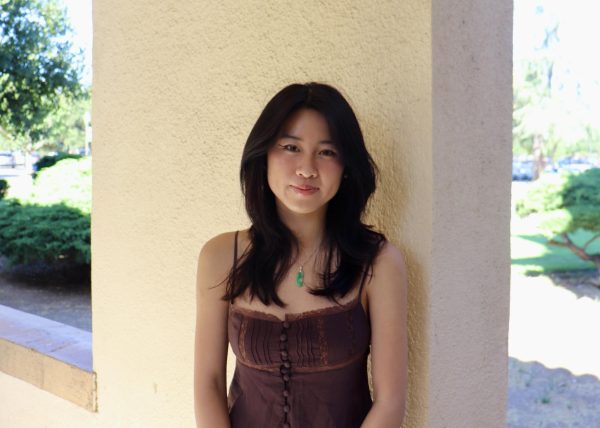Carrying the Legacy of the Holocaust Forward
The retelling of a Holocaust survivor
Sitting with a needle-like posture and an upturned smile, Ilana Yaari greets each student with kind eyes. Her gentle cadence contradicts her grueling story that illuminates the horrors Jewish people faced during the Holocaust.
Yaari, a Holocaust survivor, described her journey as one of luck, yet also one void of freedom: a narrative that thousands of survivors can relate to but one that fails to be heard when discussing the Holocaust. Most of the time, we only hear about statistical numbers rather than individual stories. As Yaari eased into a chair, she made a point to relay her experience.
“It is a relief telling my story because I know that I am making a difference in creating a generation that’s not going to give in to this bullsh*t,” Yaari said. “I want to make the world a better place.”
As she sat in the classroom, she did just that: Yaari explained that she was born in Warsaw, Poland, a beautiful city full of culture. At the age of four, she spent three years in the Warsaw Ghetto with her mother and father, where she would eventually be exposed to the Nazi regime’s chokehold over her home country.
A major figure that guides Yaari through her journey is her nanny, Marianna Popinska, someone Yaari held close to her heart as Popinska acted as her mother figure and provided her with a sense of shelter and belonging. In Yaari’s eyes, Popinska was a saint: a beautiful woman with piercing dark eyes, and dark olive skin.
“There was no fear in her agenda,” Yaari said. “That’s how she was able to save us many times.”
However, not all Jewish people were as strong-minded as Popinska. The Germans systematically made sure the Jewish people submitted to their ideologies. One way they enforced this was through the creation of the Jewish police which pitted Jewish people against each other.
Many Jewish people were dehumanized and degraded from any sense of self-worth as they were seen as merely objects that helped strengthen the Nazi regime. During round-ups, the Jewish people were categorized into two categories: the “productive” and the “nonproductive.”
“Those sent to the left [unproductive] were killed,” Yaari said. “They tried to leave only the ones that were ‘productive’,” Yaari said.
Those sent to the left included Yaari’s mother. Although young, Yaari knew that moment was the last time she would see her mother. Her father was completely destroyed; however, he remained strong and courageous as he knew he still had a daughter to protect.
Every night, her father would tell her fairytales to encourage her to not lose hope as all of them had happy endings. This tradition instilled an optimistic mentality in Yaari that stayed with her throughout the rest of her journey and still lives within her now.
Yaari’s father began to work outside the Ghetto in order to find a connection to freedom and would leave Yaari in a coal box. Eventually, they joined some friends who were hiding in a cellar with 52 other people. When Yaari and her father arrived at the cellar, however, a Jewish person disclosed the location to the Jewish police, and those that were hiding were immediately taken out.
“They just shot the babies and the mothers covered their mouths,” Yaari said. “I felt completely numb…you come to a point where you cannot take it anymore.”
After being caught by the Germans, Yaari was forced to go to the extermination camps in Treblinka. Luckily, due to a revolt in Treblinka, the extermination camps closed and Yaari ended up staying at Umschlagplatz for a month instead. Through the efforts of a Jewish policeman, she was able to reunite with her father and nanny.
Her father was working back home where he would occasionally send letters to Yaari to keep in touch. However, he would eventually meet his end at the work camp where he was shot in the back. Yaari’s nanny tried to save him but it was to no avail.
Through her nanny’s courage, her mother’s determination, her father’s guidance, the efforts of a policeman and her own strong will, Yaari survived.
Presently, with her grandson, Yaari revisited Warsaw. On this journey, she realized something that invigorated a desire to tell her narrative.
“I wanted my children, my grandchildren to see what people have done for me,” Yaari said.
Yaari grew to love narrating her story to a wide audience of young people. At age 86, she walked into a classroom with vigor and excitement, ready to relay her experiences and illustrate different perspectives of the Holocaust and how it impacted Jewish communities.
“I want you to remember one thing, use your voice,” Yaari said. “This is the most important tool to make the world a better place…I believe young voices will change the world.”
Featured art by Jeslyn Chen

2022-2023 Staff Writer
2023-2024 Creative Director
Journalism is integral in every society across the globe as it is how people stay informed. It...







![Polynesian Club Performs at the Cultural Celebration Assembly
[Photo Courtesy of Savannah Earley]](https://cmagazine.org/wp-content/uploads/2025/04/PNG-image-600x535.jpeg)